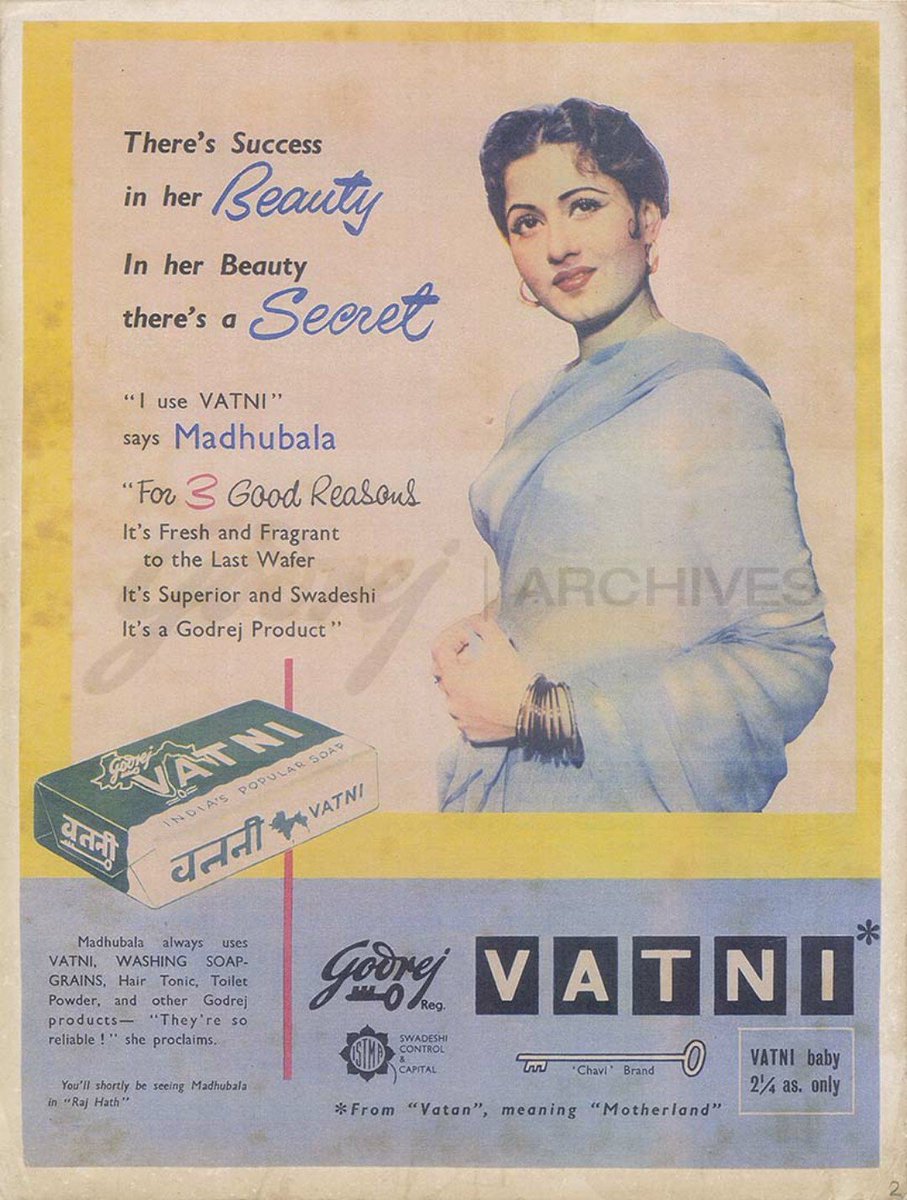History of the Swadesi soaps: Godrej No.1, No. 2 and Vatani…
Interesting piece by Himani Chanda in The Print.
She tells us how Godrej entered the field of soap making and used the swadesi appeal to sell their products:

It was in 1906 when the Indian National Congress, prompted by its leader Lokmanya Tilak and industrialist Ardeshir Godrej among others, promised to introduce the swadeshi element into the production of soaps.
Ardeshir Godrej, a lawyer-turned-serial entrepreneur, along with his brother Pirojsha Burjorji co-founded the Godrej & Boyce manufacturing company, which is now a $4.54 billion Indian conglomerate called Godrej Group.
A decade later, the Mysore and Madras governments set up soap factories and by 1918, Ardeshir Godrej had launched the company’s washing soap bar. “He (Ardeshir) went on to experiment with the idea of making toilet soaps from vegetable oils instead of animal fats as was the accepted practice in most countries since the beginning of soap manufacture,” according to the archives of the company.
In 1920, the first toilet soap made from vegetable oil was ready for commercial sales. It was known as “No. 2”. Ardeshir introduced another soap brand in 1922, named “No.1”.
While it’s not entirely clear why Ardeshir first launched a product named No.2 and then No.1, it was nevertheless quite certain that he had mastered the art of making soaps with two back-to-back stints. “Ardeshir now wanted to focus on expanding the soap business, and so left the manufacturing of locks and safes to his brother Pirojsha,” says the company on its website.
Then came another soap – Turkish Bath – in 1926. But the most popular in the line of soaps Godrej produced in those years was ‘Vatni‘ because by then, the company had become stable and learned the trick on how to brand its soap bars.
Vatani’s brand ambassador was none other than Madhubala. Godrej used “Made in India” back then:
The brand was launched in an era – in the late 1920s or early 1930s – when the fight for free India was at its peak and Indians had boycotted the goods produced by British companies in the wake of the British government’s decision to divide Bengal.
Vatni was one among the many brands that were born when ‘Made in India’ or Swadeshi movement encouraged entrepreneurs to take risks and launch products for Indians. For instance, in 1907, sharbat (drink) Rooh Afza was launched by a Unani hakeem(doctor) Hafiz Abdul Majeed under the brand name Hamdard.
Vatni witnessed the hard-won freedom of the country and went on to become the popular “swadeshi” soap used by people in independent India.
In order to encourage Indians to buy the soap bar, Godrej wrapped its product in green and white packaging with words that read: “Made in India, for Indians, by Indians.” The wrapper of the soap carried the map of undivided India for many years even after Independence and the country’s Partition.
Yesteryear actress Madhubala promoted the brand in posters and print advertisements with the punchline: “It’s superior, it’s swadeshi.”